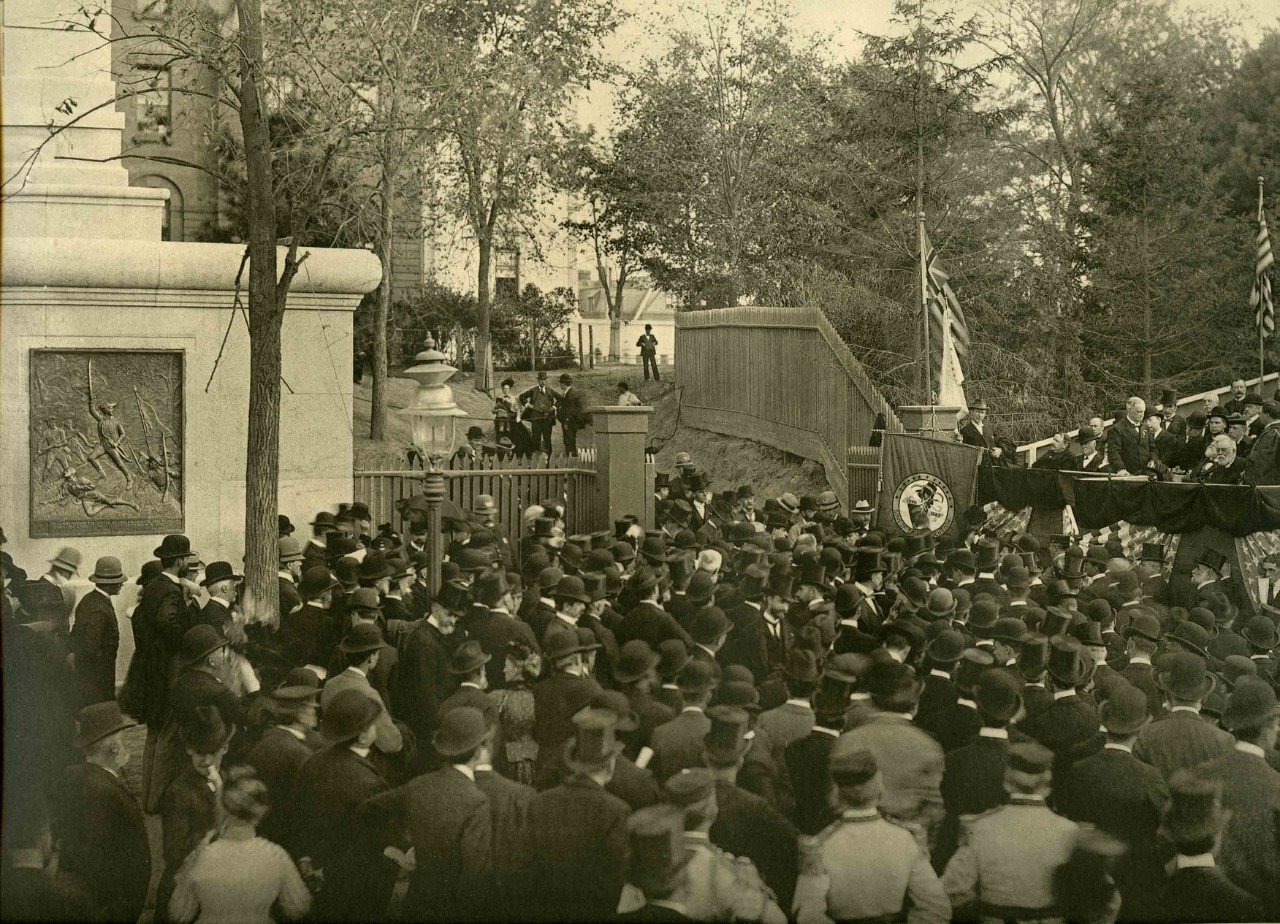Revolutionary War
Home | About | Campus Tour | Help Us
Revolutionary War
Columbia, its students, and its alumni played a prominent role in the American Revolution. Some of its students served in the Continental Army or state militias while others helped to direct the political struggle for independence. Several were among those remarkable individuals commonly regarded as the nation’s Founding Fathers.
Robert R. Livingston belonged to the five-member committee assigned by the Continental Congress to prepare a draft of the Declaration of Independence. Alexander Hamilton was a lieutenant colonel in the Continental Army, served as aide-de-camp to General George Washington, and led a New York regiment in the Battle of Yorktown. Gouverneur Morris was a leading figure in the New York Provincial Congress and later, as a member of the Continental Congress, provided critical political and administrative support to the Continental Army. In addition to serving in the Continental Congress, John Jay was the colonies’ Minister to Spain during the war and a member of the committee that negotiated the Treaty of Paris which ended the Revolutionary War.
A good number of King’s College students and alumni also sided with the British, even taking up arms in support of the Crown. Myles Cooper, the University’s president and an ardent Loyalist, was forced into exile during the war, while one of the University’s governors, Charles Inglis, served as a Loyalist publicist.
When the focus of the conflict of shifted to New York in 1776, classes at the College were canceled and supporters for independence turned the campus into a barracks and military hospital. Following the Battle of New York, the Continental Army retreated up Manhattan Island in September 1776, fighting a rearguard action, known as the Battle of Harlem Heights, on the site of the Morningside Heights campus. After the Continental Army evacuated Manhattan, the British maintained control of New York until the end of the conflict in 1783. They used College Hall, located near the present City Hall Park, between Park Place and Barclay Street, as a military hospital.
At least two Columbia students and alumni are known to have lost their lives during the Revolutionary War.
 Detail from the photograph of the installation of the plaque commemorating the Battle of Harlem Heights, fought somewhere between where the Mathematics and Barnard are located today, October 1897.
Detail from the photograph of the installation of the plaque commemorating the Battle of Harlem Heights, fought somewhere between where the Mathematics and Barnard are located today, October 1897.
Alumni who perished in this war
| Name | School | Attended | Date of Death |
| Custis, John Parke | King's College | 1773 | October 1781 |
| Rutgers, Harman | King's College | 1770-1772 | August 27, 1776 |
